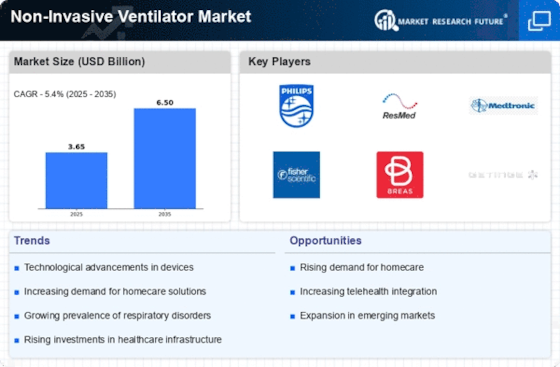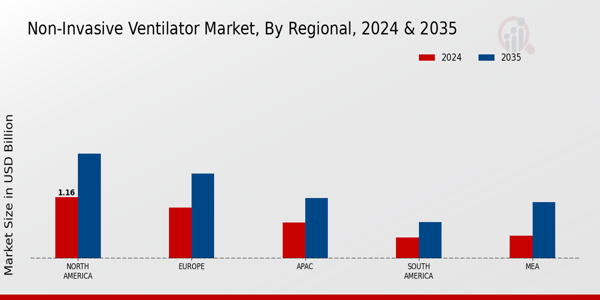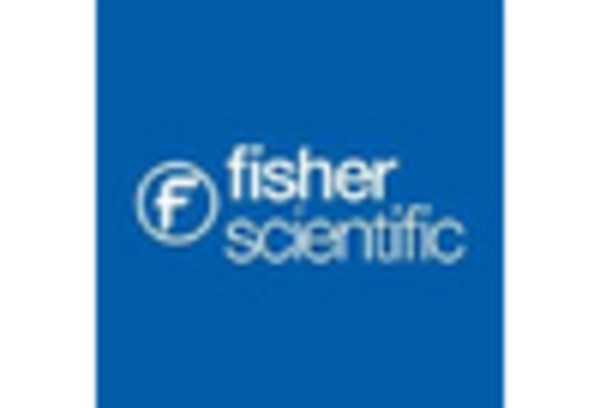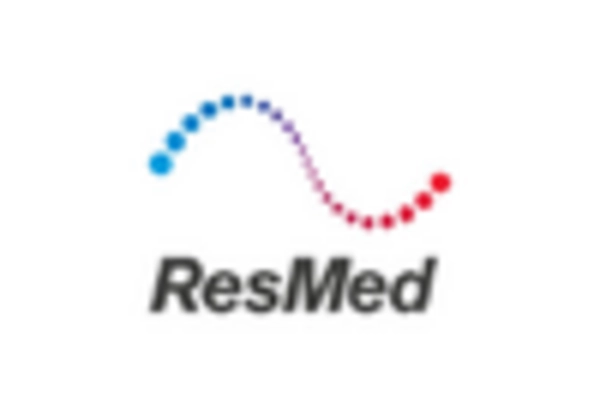Regulatory Support for Non-Invasive Ventilator Market
The Non-Invasive Ventilator Market is experiencing favorable regulatory support, which is facilitating market growth. Regulatory bodies are increasingly recognizing the importance of non-invasive ventilation in managing respiratory conditions, leading to streamlined approval processes for new devices. This supportive regulatory environment encourages innovation and allows manufacturers to bring advanced products to market more efficiently. Recent data indicates that the time taken for regulatory approvals has decreased by approximately 20% over the last two years, which is likely to stimulate competition and enhance product offerings. As a result, the market is poised for expansion, with new entrants and established players alike capitalizing on the opportunities presented by a more favorable regulatory landscape.
Technological Advancements in Non-Invasive Ventilator Market
The Non-Invasive Ventilator Market is experiencing a surge in technological advancements that enhance the efficacy and usability of ventilators. Innovations such as improved sensors, artificial intelligence integration, and enhanced monitoring capabilities are becoming increasingly prevalent. These advancements not only improve patient outcomes but also streamline the workflow for healthcare providers. For instance, the introduction of smart ventilators that can automatically adjust settings based on real-time patient data is revolutionizing respiratory care. Furthermore, the market is projected to grow at a compound annual growth rate (CAGR) of approximately 8% over the next five years, driven by these technological innovations. As a result, manufacturers are investing heavily in research and development to stay competitive in this rapidly evolving landscape.
Focus on Patient-Centric Design in Non-Invasive Ventilator Market
The Non-Invasive Ventilator Market is increasingly emphasizing patient-centric design principles. This focus aims to enhance user experience and improve adherence to treatment protocols. Manufacturers are now prioritizing features such as intuitive interfaces, lightweight designs, and customizable settings to cater to individual patient needs. Market Research Future suggests that devices designed with patient comfort in mind can lead to higher satisfaction rates and better clinical outcomes. As a result, companies are investing in user experience research to inform their product development strategies. This trend is likely to drive market growth, as healthcare providers seek to adopt technologies that not only meet clinical requirements but also resonate with patients on a personal level.
Rising Awareness of Respiratory Health in Non-Invasive Ventilator Market
The Non-Invasive Ventilator Market is benefiting from a rising awareness of respiratory health among the general population. Educational campaigns and initiatives aimed at promoting respiratory health are becoming more prevalent, leading to increased recognition of the importance of early intervention and effective management of respiratory conditions. This heightened awareness is driving demand for non-invasive ventilation solutions, as patients and healthcare providers alike seek to adopt proactive measures. Market data indicates that the awareness campaigns have contributed to a 15% increase in consultations for respiratory issues over the past year. Consequently, this trend is likely to bolster the market as more individuals seek out non-invasive ventilators as part of their treatment plans.
Increased Demand for Home Care Solutions in Non-Invasive Ventilator Market
The Non-Invasive Ventilator Market is witnessing a notable increase in demand for home care solutions. This trend is largely attributed to the growing aging population and the rising prevalence of chronic respiratory diseases. Patients are increasingly opting for non-invasive ventilation as a viable alternative to invasive procedures, which can be more complex and carry higher risks. The market data indicates that the home care segment is expected to account for over 40% of the total market share by 2026. This shift towards home care not only alleviates the burden on healthcare facilities but also provides patients with greater comfort and autonomy in managing their conditions. Consequently, manufacturers are focusing on developing portable and user-friendly devices tailored for home use.


















Leave a Comment